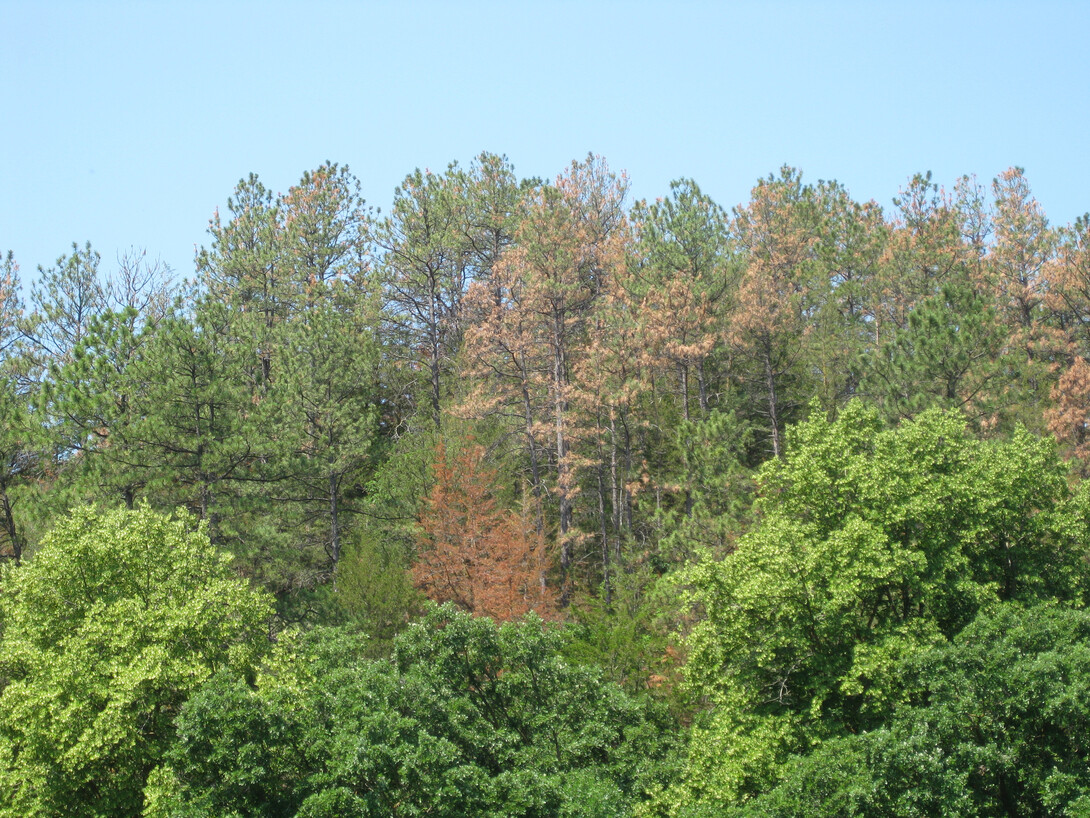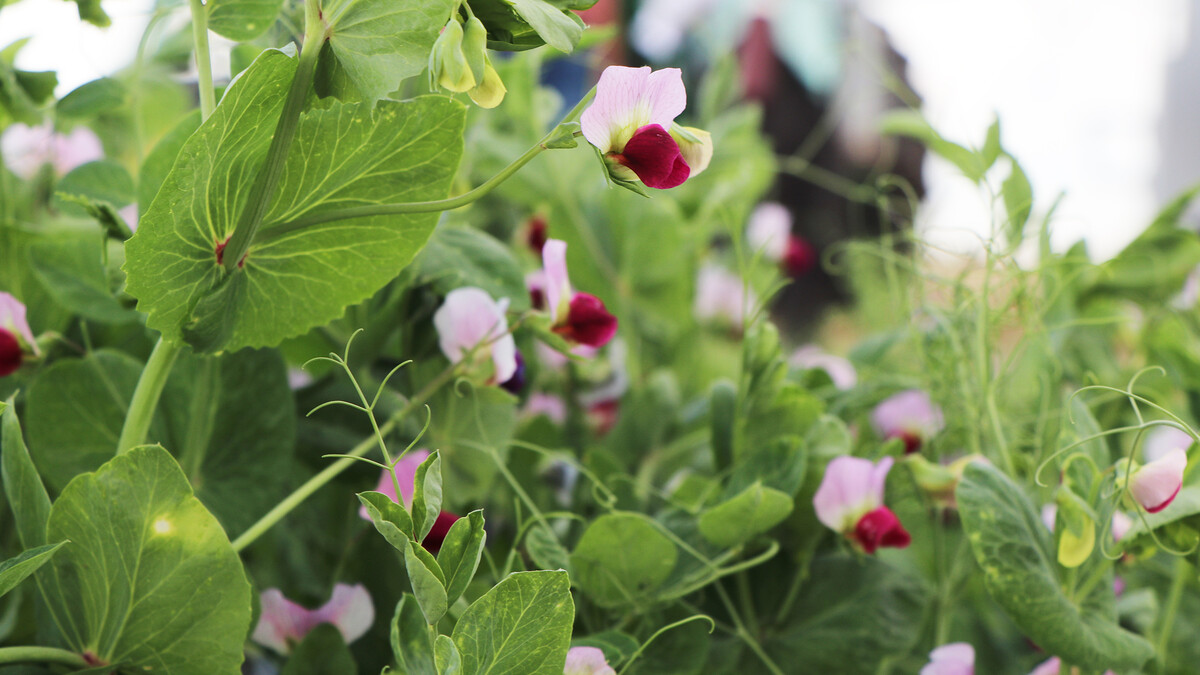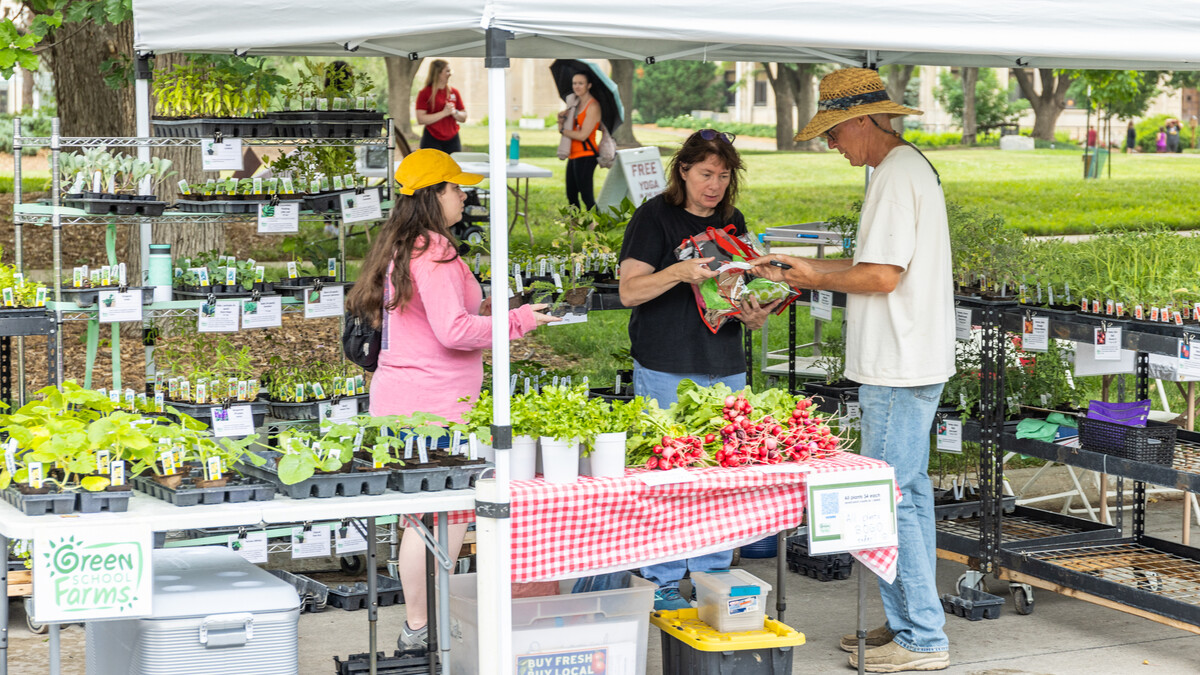
Aug. 19, 2013
LINCOLN, Neb. — Western and northern Nebraska's native ponderosa pine trees, already hard hit by fire, drought and other factors, also must ward off the lps beetle, an insect that can attack both stressed and healthy trees in large enough numbers to kill the trees or the tops of trees.
Ips beetle, also known as pine engraver beetle, is a serious problem. The insect typically makes Y-shaped tunnels under the bark. While the Ips beetle is a serious problem in western Nebraska, this insect is not the same one decimating the Black Hills pine forest or the forests of Colorado. And this beetle is not necessarily what is killing many native pines in windbreaks across Nebraska. Many trees in windbreaks are dying from the drought and not necessarily from beetle infestation.
"There are 220,000 acres of native ponderosa pine forests in western and north-central Nebraska that could be affected by the Ips beetle. That's why homeowners and landowners should take precautions to help trees remain healthy by using proper management strategies," said Mark Harrell, forest health program leader for the Nebraska Forest Service.
To keep beetle populations low and reduce the damage beetles cause, it's important to use proper timber management, good harvesting practices and avoid conditions that create local outbreaks of the beetles. Timing logging operations for August through December is the key, along with promptly crushing or burning the logging debris so it's not available to attract and support the insects. In western Nebraska, these beetles may be found with other bark beetles, such as mountain pine beetle. In these cases, consider using management strategies for all beetles present.
In some cases, several strategies applied together will provide the best results. Allowing sufficient time for the remaining woody material or slash to dry is key. However, any slash created during this time that is covered by early snow may still be fresh enough to attract and support beetles in the spring.
Harrell suggests the following management strategies for forests and windbreaks:
– Maintain forest stands at appropriate stocking level for the site. Thin stands as needed to improve tree vigor.
– Conduct logging operations from August through December.
– Avoid creating pine slash from January through July.
– Promptly treat slash by crushing with a bulldozer or by chipping to reduce the amount of suitable wood for beetles. Decrease size of wood pieces, remove and dry bark.
– When possible, burn slash piles but avoid scorching nearby trees, which can make trees more susceptible to beetle attack.
– If slash disposal is not possible, lop and scatter slash. Reducing the size of the slash and exposing it to direct sunlight helps dry it more quickly, making it less suitable for beetle development.
– Do not pile logs or slash. Shade in the pile allows some wood to remain suitable for beetle development for long periods.
– Especially do not pile logs, slash or fresh firewood near standing trees. Beetles that emerge from piles attack nearby trees and can cause top killing or death.
– During logging, drop trees into openings; use established skid trails to avoid damaging the residual stand.
– At the end of the activity, remove and dispose of trees damaged by logging and road construction.
Harrell suggests the following management strategies for developed landscapes:
– Reduce or avoid stress in landscape pines with proper watering, mulching and pruning.
– During construction, protect the roots of trees left as landscape trees. Remove weakened or badly damaged trees.
– Do not add or pile soil over root areas (area under drip line); this weakens trees.
– Do not drive or park vehicles or equipment over root areas, which can damage roots.
– Avoid injury to trees from herbicides and other pesticides by carefully reading and following label instructions.
– Do not leave pruned branches near trees. Beetles can develop in and emerge from the pruned branches and attack trees.
– Remove infested trees and promptly dispose of them by chipping, burning or burying.
– Protect high-value trees with sprays of appropriate insecticides. Currently labeled products include formulations of permethrin, bifenthrin and carbaryl. Insecticides are not necessary if Ips beetles do not pose a serious risk
For information about the Ips beetle and other insects that threaten Nebraska trees, go to the forest health section of the Nebraska Forest Service website at nfs.unl.edu. A new technical report on the Ips beetle is available online: http://nfs.unl.edu/documents/foresthealth/Managing Ips 6-11-13.pdf.
Forest Health Program Leader
Nebraska Forest Service
402-472-6635
mharrell2@unl.edu Susan Helmink
Communications Specialist
Nebraska Forest Service
402-472-9869
shelmink3@unl.edu Dan Moser
IANR News Service
402-472-3030
dmoser3@unl.edu







